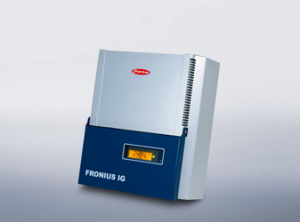
All power stacks within Fronius high-frequency inverters can operate as a master or slave inverter. Each time the inverter is restarted, its control software determines which power stack has the lowest number of operating hours and assigns it the master role for that day. As soon as the PV system output exceeds a pre-set value, the master power stack turns on subordinate power stacks as necessary. The control software repeats the process the next morning, and depending on the number of operating hours already worked, a different power stack may become the master.
In a traditional master/slave configuration comprising two or more inverters, one inverter is designated as the permanent master. This master inverter is responsible for controlling the subordinate inverters and managing the system. It begins working in the morning, and as sunlight levels increase, it switches on subordinate inverters as required. On cloudy days or in the winter, the master inverter can work alone without subordinate inverters. However, that means it also works many more hours under full load, which puts more stress on its components over time.
In addition to Fronius MIX Technology, Fronius high-frequency inverters each have a dedicated area at their base for all connections, making installation easy and efficient for installers.


